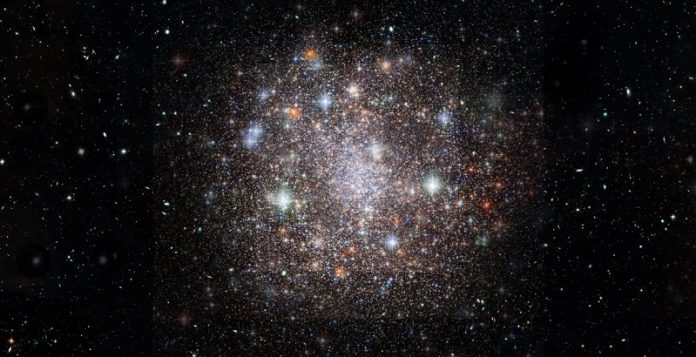
Astronomers have made an exciting discovery about how young stars form in the Large Magellanic Cloud (LMC), a small galaxy near the Milky Way.
Using the powerful James Webb Space Telescope (JWST) and the Atacama Large Millimeter/submillimeter Array (ALMA), scientists have found a newborn super star cluster, providing a rare glimpse into the early stages of massive star formation.
About 6-7 billion years ago, super star clusters were common, producing hundreds of stars every year. However, this kind of star formation has slowed down over time, and only a few super star clusters remain in our local universe.
Until now, only two were known in the Milky Way and one in the LMC, all millions of years old.
Thanks to JWST, astronomers have now confirmed the presence of a second, much younger super star cluster in the LMC. Located in the N79 region, this cluster is only 100,000 years old, allowing scientists to witness its birth in real-time.
The LMC, which is about 160,000 light-years away, is a great place to study how stars form outside our galaxy.
The JWST’s Mid-Infrared Instrument (MIRI) observed 97 young stars in the N79 region, including the newly discovered super star cluster, named H72.97-69.39.
The LMC has fewer heavy elements than the Milky Way, making its conditions similar to those from billions of years ago when many of the first stars in the universe formed.
Images from JWST show that the biggest and brightest young stars are clustered near H72.97-69.39, while smaller stars are spread out around the region, a pattern known as mass segregation.
What was once thought to be a single giant star turned out to be a group of five young stars, with one being 500,000 times brighter than the Sun. JWST’s detailed imaging also revealed that over 1,500 young stars surround this powerful cluster.
ALMA also played a crucial role in this discovery. It revealed two massive clouds of dust and gas colliding in N79. At the meeting point of these clouds is the super star cluster H72.97-69.39, where the most luminous young star was detected. Scientists believe these colliding gas clouds may have triggered the formation of the super star cluster.
Lead researcher Isha Nayak explained, “Studying young stars in the LMC allows us to see how stars like our Sun form in other galaxies. For the first time, we can observe this process in amazing detail.”
This research also helps scientists understand how stars evolve over time, from young protostars still forming to older stars shaping their surroundings.
The discovery sheds light on how elements, ice, and organic molecules are spread across the universe. Nayak adds, “By witnessing the birth of a super star cluster, we gain insight into the same processes that shaped the earliest galaxies and, ultimately, our own existence.”
Source: NSF.



